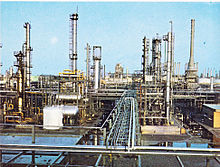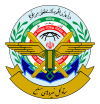Image 10The
1953 Iranian coup d'état, known in
Iran as the
28 Mordad coup d'état (
Persian:
کودتای ۲۸ مرداد), was the U.S.- and British-instigated, Iranian army-led
overthrow of the democratically elected
Prime Minister Mohammad Mosaddegh in favor of strengthening the autocratic rule of the
shah,
Mohammad Reza Pahlavi, on 19 August 1953, with the objectives being to protect British oil interests in Iran after its government refused to concede to western oil demands. It was
instigated by the United States (under the name
TP-AJAX Project or
Operation Ajax) and the United Kingdom (under the name
Operation Boot). This began a period of dissolution for Iranian democracy and society whose effects on civil rights are prevalent to this day.
Mosaddegh had sought to
audit the documents of the
Anglo-Iranian Oil Company (AIOC), a British corporation (now part of
BP), to verify that AIOC was paying the contracted royalties to Iran, and to limit the company's control over Iranian
oil reserves. Upon the AIOC's refusal to cooperate with the Iranian government, the parliament (
Majlis) voted to
nationalize Iran's oil industry and to expel foreign corporate representatives from the country. After this vote, Britain instigated a worldwide boycott of Iranian oil to pressure Iran economically. Initially, Britain mobilized its military to seize control of the British-built
Abadan oil refinery, then the world's largest, but Prime Minister
Clement Attlee (in power until 1951) opted instead to tighten the economic boycott while using Iranian agents to undermine Mosaddegh's government. Judging Mosaddegh to be unamenable and fearing the growing influence of the
communist Tudeh, UK prime minister
Winston Churchill and the
Eisenhower administration decided in early 1953 to overthrow Iran's government. The preceding
Truman administration had opposed a coup, fearing the precedent that
Central Intelligence Agency (CIA) involvement would set, and the U.S. government had been considering unilateral action (without UK support) to assist the Mosaddegh government as late as 1952. British intelligence officials' conclusions and the UK government's solicitations to the US were instrumental in initiating and planning the coup. (
Full article...)














































